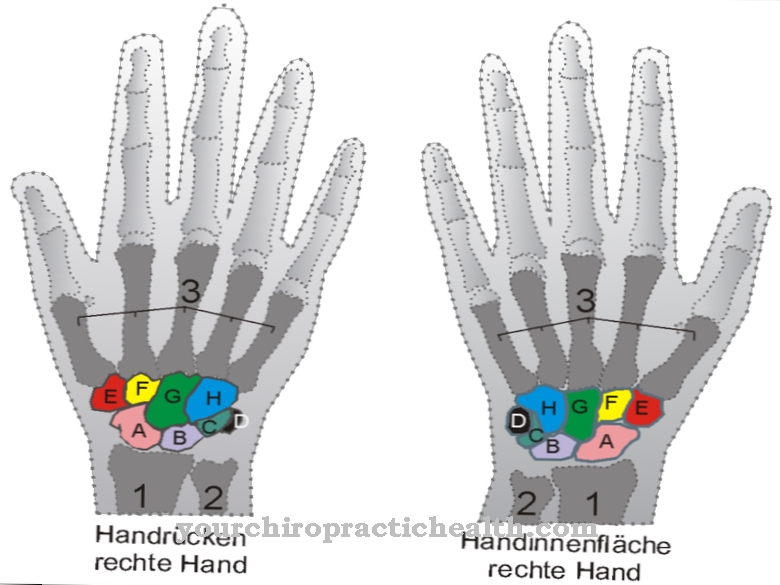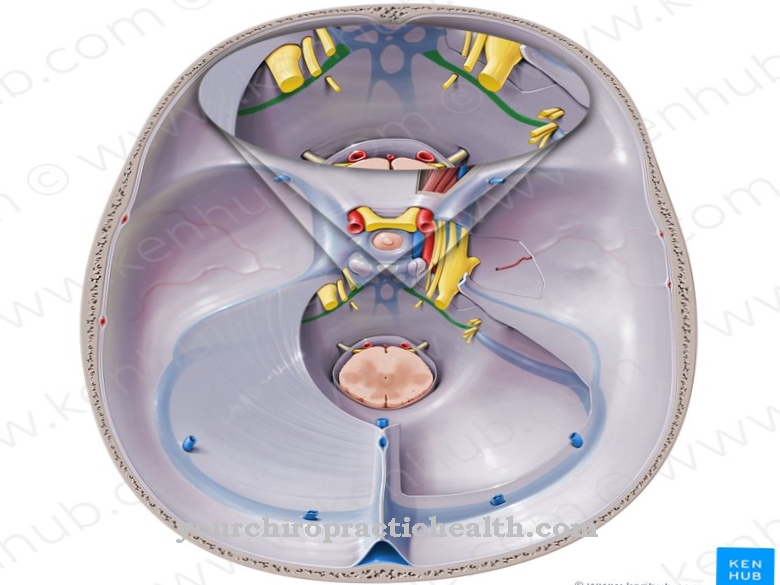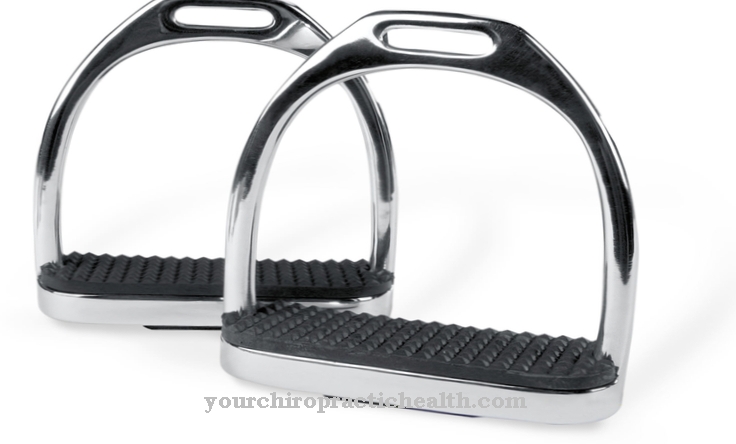Of the Mylohyoid muscle is the one above the hyoid bone Mandibular hyoid musclewhich arises from a fine bone ridge on the inside of the lower jaw. Tension in the jawbone muscle can be responsible for swallowing difficulties and other health disorders.
What is the mylohyoid muscle?
The hyoid bone (os hyoideum) is surrounded by two muscle groups, divided into internal (intrinsic) and external (extrinsic) muscles. The mylohyoid muscle, like the digastricus muscle and the stylohyoid muscle, belongs to the upper hyoid muscles and has the ability to pull up the hyoid bone.
The lower muscles of the tongue, sternohyoideus, thyrohyoideus, and omohyoideus muscles are responsible for pulling downwards. The mandibular hyoid bone muscle leads together with the other muscles in the direction of the jaw and neck muscles, and there are connections to the shoulder blades and the chest. Since the hyoid bone is very deep, the elongated mylohyoid muscle is one of the most interwoven muscles in the head area.
The skeletal muscle attached to the hyoid bone is connected to the hyoid bone body with its posterior fibers, while the other hyoid bone muscles meet with their anterior fibers in the connective tissue line of the median plane (raphe mylohyoidea). The mylohyoid muscle also takes on the functional supply of tissue. The entire hyoid musculature supports tongue movement, speaking, breathing, swallowing, coughing, larynx movement, mouth opening and the chewing system. The hyoid bone muscle is used specifically to lift the hyoid bone and open the lower jaw.
Anatomy & structure
The mylohyoid muscle is a derivative of the first gill arch and also bears the name Diaphragm oris. The soft floor of the mouth between the lower jaw and hyoid bone is mainly formed by the left and right hyoid muscles.
Both muscles of the tongue enter into a connection via the raphe mylohyoidea and come together to form a continuous muscle plate. Under the tongue on the floor of the mouth is the hyoid bone, a curved U-shaped bone that is the only one not connected to the skeletal system. It hangs from the tongue muscles and ligaments that anchor it in the base of the skull. The tongue muscles allow the hyoid bone to support the tongue weight. Without this function man could neither speak nor articulate words.
The mylohyoid muscle lifts the hyoid bone when swallowing and opens the jaw, while the geniohyoid muscle, the chin-hyoid bone muscle, moves the hyoid bone forward. The double-bellied digastrica muscle on the protruding chin and the split stylohyoid muscle on the small hyoid horn are also responsible for elevating the hyoid bone. The mandibular salivary gland is also located on the posterior edge of the mylohyoid muscle under the floor of the mouth.
Function & tasks
Every day people consciously or unconsciously use their tongue muscles, for example to moisten their lips. In addition to opening the jaw, the mylohyoid muscle is also involved in the swallowing process and the grinding movements. The planar hyoid bone muscle, together with the other intrinsic and extrinsic muscles, guarantees the uninterrupted functionality of the tongue when eating and during unrestricted chewing and speaking.
The inner tongue muscles are able to deform the tongue and are activated by the seventh cranial nerve (nervus hypoglossus). The external muscles of the tongue can move the tongue throughout the oral cavity, lifting it, lowering it, pulling it back and forth. The mylohyoid muscle takes on certain tasks that are subject to the constant alternation of movement and tension. The larynx and windpipe are connected to the hyoid bone. During the act of swallowing, certain tongue muscles pull up together with the larynx and close the larynx entrance by pressing the lid of the larynx against the inside of the throat. The mandibular hyoid bone muscle forms a stable connection to the floor of the mouth. In addition, the mylohyoid muscle influences the neck muscles and is also involved in the coordination of movements in the neck and shoulder area.
There are no muscles directly above the hyoid bone, which is why it can be felt through the skin. Since the tongue muscles stretch from the jaw, chest and shoulder to the tongue, they are an important building block for various movement sequences. The muscles on the hyoid bone and the thyroid cartilage as the largest larynx cartilage are among the most important forms of movement in the neck, head and trunk.
You can find your medication here
➔ Medicines against tartar and tooth discolorationDiseases
If posture or breathing difficulties occur, doctors rarely consider problems with the hyoid bone and the surrounding tongue muscles. If the hyoid bone is only loosely fixed in the case of weak tongue muscles and is too far back, the lower jaw may recoil.
This misalignment of the jaw causes narrowing of the windpipe, which can cause breathing problems. In speech therapy, the tongue function plays an important role in language formation. By training the tongue and mouth muscles, various speech and swallowing disorders can be treated. Tension in the mylohyoid muscle or the other tongue muscles can also lead to a variety of health restrictions. If the hyoid muscles are impaired in their mobility, the tension often leads to swallowing difficulties, headaches or stiff neck.
If children suffer from incorrect tongue rest, mouth breathing is favored instead of correct nasal breathing. In this case, the tongue is not located on the roof of the mouth, but on the floor of the mouth, which leads to slack tongue muscles and possibly the development of a too large lower jaw. If the tongue falls back while sleeping in the supine position, the flow of air is obstructed, which can lead to snoring or even pauses in breathing. Against the potentially life-threatening sleep apnea, doctors now use tongue pacemakers that stimulate certain tongue muscles and the tongue nerve.
In the treatment of sleep apnea, targeted tongue muscle training is also used, which strengthens the suprahyoid muscle group, which also includes the mylohyoid muscle. This therapy method is carried out by means of electrical stimulation over a period of four to eight weeks and can significantly improve the parameters in case of nocturnal breathing disorders.
















.jpg)
.jpg)



.jpg)






